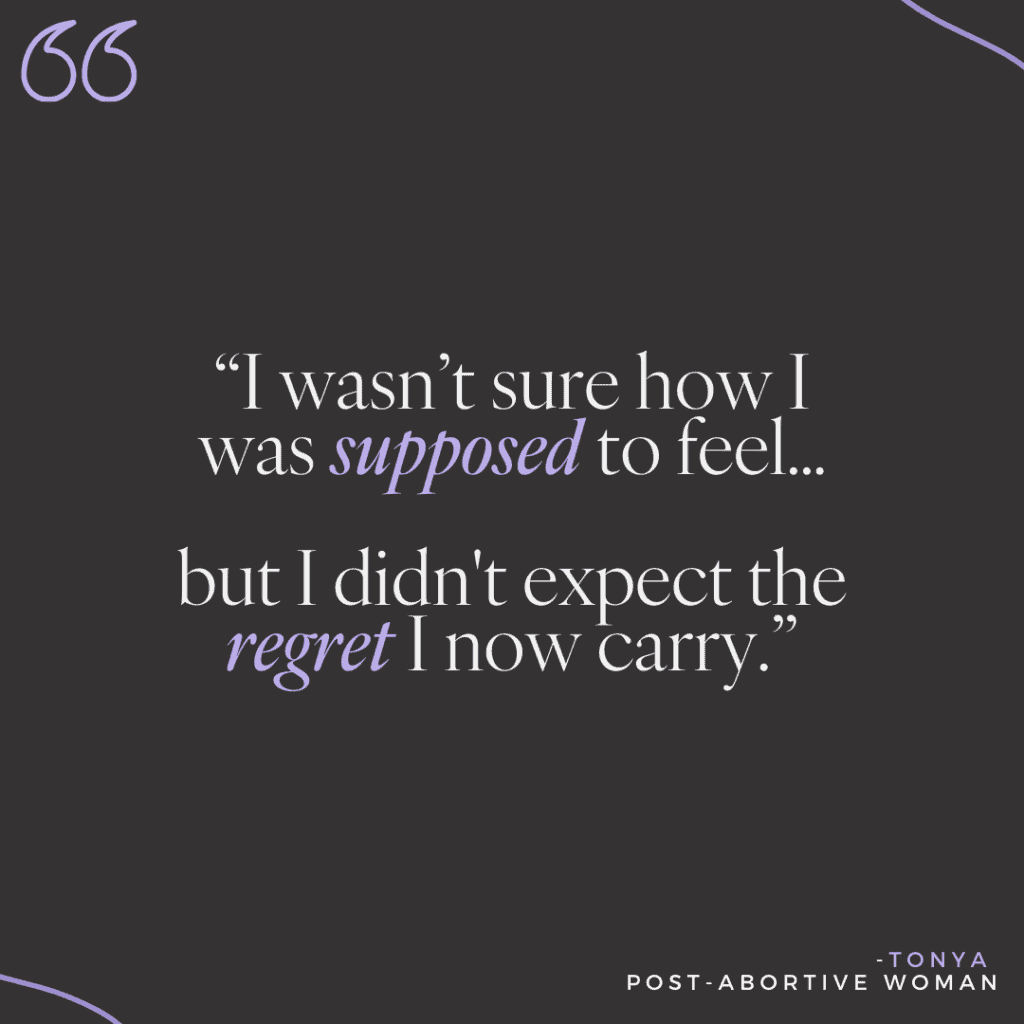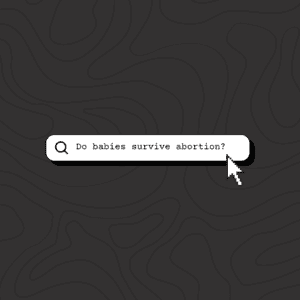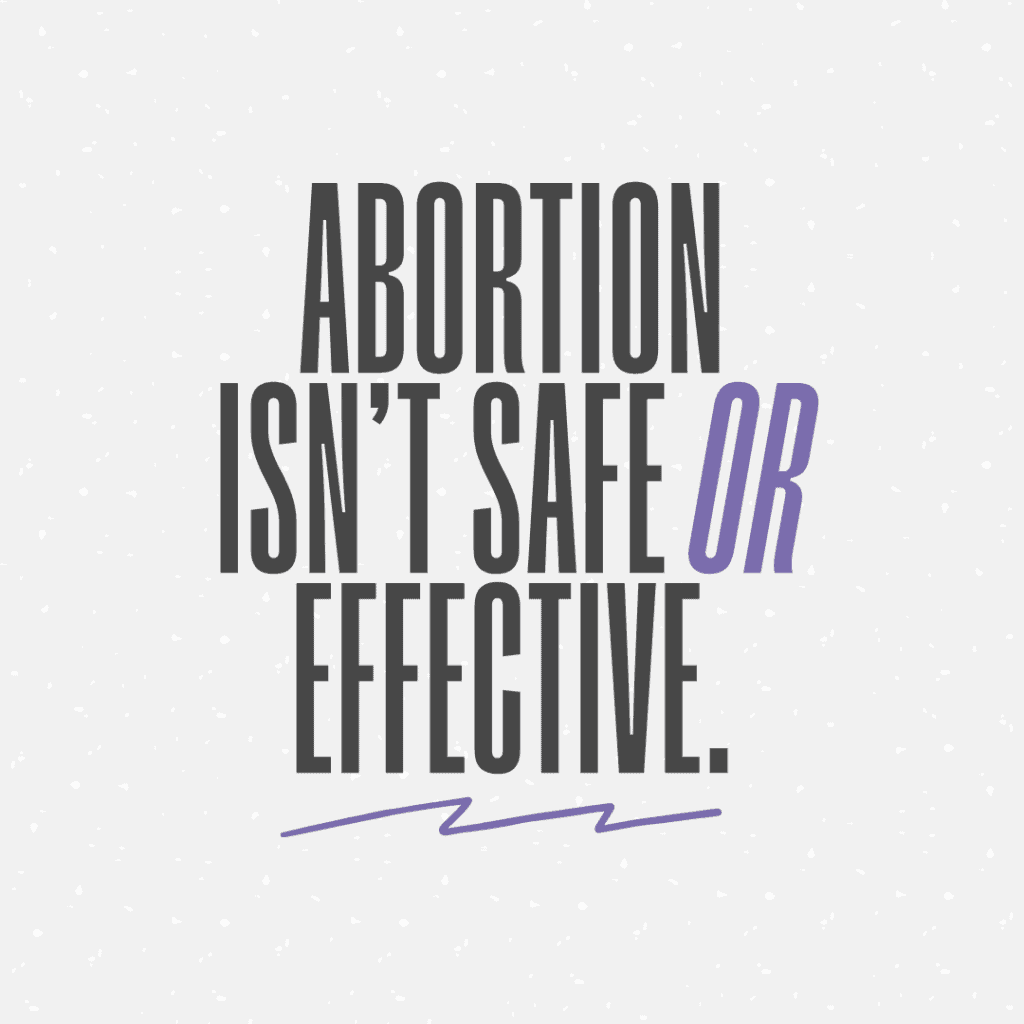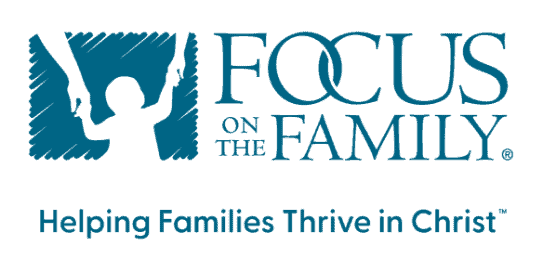Tonya wasn’t sure what she was “supposed” to feel as she left the abortion clinic that spring day in 1991, but she didn’t expect the regret she now carried. It hung over her in the recovery room. It nagged at her as she gingerly climbed into the passenger seat for the drive back from the clinic. It intensified when she returned home to her two children.
But regret wasn’t the only thing Tonya carried. Though she had no idea at the time, she was still carrying the baby she thought she’d just aborted.
Do Babies Survive Abortion?
The baby had survived the dilation and curettage (D&C) procedure. Tonya was 10-and-a-half weeks along, and now the baby was fighting for her life.
Tonya tried to resume her normal life, but nothing seemed normal. She was 22 years old and raising her two children alone while going through a divorce.
As the weeks passed, Tonya found herself keeping track of how far along in the pregnancy she would have been and the baby’s stages of development. Weeks turned to months, but Tonya’s regret remained.

Can Abortions Fail?
Her busy life made it possible to keep pushing back negative thoughts to the far reaches of her mind until the day she felt a familiar fluttering in her abdomen. A flood of emotions swept over Tonya. Shock. Fear. Then, a powerful surge of hope. Could it be? Did her abortion fail? Tonya made an appointment with her doctor and discovered she was five-and-a-half months pregnant.
How did this happen? What should I do now? Is the baby OK? Questions and concerns looped through her mind. The same circumstances that first led her to the abortion clinic were still present in her life. She had made a host of poor choices leading up to this pregnancy. Could I provide for another child? Do I have the capacity to parent three kids alone?
Additional Resources:
Adoption Plan Instead of Abortion

Months of regret over the abortion were replaced with a desire to protect and provide for the tiny life within her, so Tonya finally settled on a plan. She would place the baby in the arms of a loving adoptive family. Tonya had a few months left before her October due date—enough time to find the ideal family.
But on Aug. 12, 1991, that timeline changed drastically. Tonya went into premature labor and delivered a 3-pound, 6-ounce baby girl.
Yet the miracle of the baby’s survival was quickly overshadowed by the horrible reality of exactly what she survived. The skin and skull from her forehead to her right ear had been cut away, leaving her brain partially exposed. Her medical records state that “the jagged edges of the skull and open scalp have the appearance of an old wound.”
What is a Failed Abortion?
The D&C abortion attempt had clearly wounded her. The baby was rushed to the NICU, where she was placed on a breathing machine. Brain bleeds, brain damage and a diagnosis of cerebral palsy meant the infant’s survival was improbable at best. This child was no longer an unwanted pregnancy; she was Tonya’s flesh and blood, fighting to survive. In Tonya’s view, she’d been given a second chance to do what was right. Coming face to face with her baby’s humanity brought out Tonya’s maternal instinct.
Tonya approached a Christian adoption agency to make an adoption plan. It wasn’t long before Tonya received a call from the agency. Terri Hoffman and her husband, Blair, were interested in adoption.
The Adoptive Side of the Story
Terri realized that almost nothing about this girl’s story fit the plans she and Blair had in mind for adoption—except one thing: They’d often discussed adopting a child with special needs. During her high school years, Terri volunteered in a special education classroom and with the Special Olympics. She’d even considered a degree in special education before she decided to pursue nursing.
Terri and Blair’s original vision involved adopting a little boy—maybe 2 to 3 years old and probably with special needs. But a tiny baby girl with an unknown future and undefined medical needs? They didn’t make a hasty decision. They spent time in prayer and interacting with other families who had experience with caring for children with special needs.
For This Child We Prayed
“What is the baby’s name?” Terri asked the adoption agency.
“I’m sorry, but due to confidentiality rules, we can’t tell you the child’s name,” the agent said. But Terri found herself scribbling a name on a piece of paper: “Hope.” It seemed to leap directly from her heart to her pen.
The couple decided that this little girl must be the child for whom they had prayed, so they moved forward with the adoption.
The hospital staff wanted Hope to weigh at least 6 pounds before she was discharged. The adoption agency trained a foster mom to care for Hope when she was first discharged from the hospital, and this same foster mother would instruct Terri and Blair once the adoption was final.
Failed Abortion and a New Hope
Hope was deeply loved—first by God, then by Tonya, the hospital team, and even the foster mother, who visited the girl numerous times and reported to the Hoffmans regarding the wonderful care Hope was receiving.
“You know, I, too, am falling in love with this baby. If you don’t adopt her, I will,” the foster mom told Terri one day. “And I’m so pleased to let you know that Hope is nearly always being held by someone—the nurses and volunteers. The nurses have even decorated her crib.”
Terri researched Hope’s medical conditions, but when she consulted with a doctor about Hope’s potential prognosis, Terri received an unexpected reply.
“Find another child,” the doctor advised. “There are a lot of children out there. She’s too sick. Find a healthy one.” A registered nurse herself, Terri knew that a prognosis is not a destination but a road map. She was more determined than ever to help Hope thrive.

Hope’s Debut
On Nov. 17, 1991, at 3 months of age and tipping the scales at 6 pounds, 6 ounces, Hope met her new parents for the first time. Hope was a beautiful baby, with a white and pink floral headband perfectly placed to cover the puckered skin on her forehead. The “kissing spot,” as Terri called the puckered skin, was formed by the cranial surgery completed to close Hope’s scalp. That outward sign, that scar, is a painful reminder of the attempted abortion. Yet it is also a testament to the power of love—and of the many kisses planted firmly on that spot over the years.
Abortion Survivors Focus on Today
Almost daily there were new revelations about just how much damage the abortion attempt had wrought and what it might mean for Hope’s future. Epileptic seizures, fairly common among children with cerebral palsy as a result of brain damage, were added to her list of complications. Terri and Blair were happy to have more answers about Hope’s condition but were grieved by yet another obstacle.
Hope has endured multiple medical procedures since birth, from the scalp closure to tendon release and back surgery. Enduring all of this alongside Hope hasn’t been easy for Terri and Blair. It’s frightening to face the fragility of life, yet Terri notes, “God is in control, and we have to focus on today. None are guaranteed tomorrow. When you have a sick child, tomorrow doesn’t matter; today does.”
Failed Abortion and Moving Forward

The injuries stemming from the failed abortion may have slowed down Hope, but they’ve never stopped her. With the love and support of so many, Hope’s childhood was filled with zip-lining, boating, wheelchair soccer and even swimming with dolphins. Hope has experienced profound happiness and exudes great joy.
Despite obstacles, Hope never gave up on earning her high school diploma. She graduated in 2010, receiving a hard-earned standing ovation from the crowd of 3,000.
Hope is now in her early 30s. She likes to connect with audiences and has spoken at numerous events with Terri over the years. Like many young women her age, Hope also dreams of getting married someday, but she doesn’t worry about the future. “If my plan doesn’t work out,” she says, “God’s plan will be better.”
God’s Plan Over Abortion
God’s plan for Hope and her relationship with her birth mother, Tonya, took a major leap forward in the later years of her childhood.
These were Hope’s first words once she steered her wheelchair up to greet Tonya. “Do you remember me from being in your belly?” Hope asked.
“I’ve remembered you every day,” Tonya replied.
Tonya continues to heal from the painful decisions she made regarding Hope’s life, and they’ve since shared their stories together at Hope’s church. Tonya sees the hand of God directing both Hope’s life and her own. “She’s here to teach us about life and true faith,” Tonya says.

















